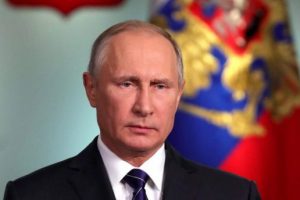 It’s been a good week for drug companies and an even better one for conspiracy theorists. Last Tuesday, angered by the bumper rise in profits being reported by vaccine manufacturers as the incidence of swine flu plummets, the former head of health at the Council for Europe accused the World Health Organization of “faking” the pandemic.
It’s been a good week for drug companies and an even better one for conspiracy theorists. Last Tuesday, angered by the bumper rise in profits being reported by vaccine manufacturers as the incidence of swine flu plummets, the former head of health at the Council for Europe accused the World Health Organization of “faking” the pandemic.
“It looks like the WHO is under the influence of industry,” Dr Wolfgang Wodarg told a hearing in Strasbourg. “It was stated in panic-stricken terms that this was a flu that could threaten humanity. This is why billions of medications were bought.”
Exhibit number one, says Dr Wodarg, is the WHO’s decision to soften its definition of a pandemic last April, shortly before the emergence of the H1N1 virus. By eliminating the requirement that influenza pandemics should cause “enormous morbidity and death”, the WHO provoked an unnecessary “scare” that conveniently triggered the activation of “sleeping” contracts with vaccine manufacturers. Yet since the WHO’s declaration of a pandemic in June, swine flu has caused just 14,000 deaths worldwide – a fraction of the number who die from seasonal flu every year. This month, the Department of Health reported that cases had fallen to such a low rate that it was cancelling its weekly press briefings.
Like all conspiracy theorists, Wodarg started with the question “Cui bono?” and served up a plausible bad guy. For its part, the WHO vigorously denies the allegations and says Wodarg is “trivialising” what for millions of people has been a very serious problem.
So who is right? Was swine flu ever a genuine pandemic threat, or was it all a lot of (very expensive) fuss about nothing? And what are the lessons for the future? When, in late March, residents of La Gloria, in Mexico, began complaining of peculiar fevers, aches and sore throats, no one took much notice at first. The Mexican government, like the WHO, was focused on a different threat: bird flu. Following the re-emergence of the H5N1 avian virus in 2005, the WHO had drawn up a comprehensive pandemic plan, complete with a phased alert system, to be activated in the event that the virus, which had a mortality rate as high as 60 per cent, began spreading widely in human populations.
“The concern was that if bird flu suddenly went pandemic, it could trigger mortality on a massive scale,” explains John Oxford, professor of virology at Barts and The London Hospital. “The last thing anyone was expecting at that point was a pig virus from Mexico.”
It seems odd to recall now, but the massive stockpiles of Tamiflu which have come in for so much criticism were originally purchased for bird flu. Indeed, it wasn’t until two Californian children developed flu-like illnesses in mid-April that officials at the Centers for Disease Control and Prevention (CDC) in Atlanta realised that a new swine flu virus was on the loose.
Scientists quickly began joining the dots, and when the CDC confirmed that the H1N1 subtype from the Californian cases was identical to a virus isolated from a five-year-old boy in the La Gloria outbreak, it automatically triggered a “phase five” alert.
At around the same time, the WHO published those new guidance notes, deleting the requirement that pandemic strains should cause “enormous morbidity and death”. This was part of an ongoing review of how it should define a pandemic. Henceforth, all that would be required was “sustained” transmission in at least two different parts of the world at the same time. The result was that on June 11, when it became clear that swine flu had spread to more than 70 countries, the WHO had no option but to declare a pandemic.
But Wendy Barclay, professor of virology at Imperial College London, who was present at many of the meetings where the change of definition was discussed, says it is a “nonsense” to make out, as Wodarg does, that it was a conspiracy. “The timing was coincidental,” she says. “The WHO was considering the change long before swine flu.” And in view of the initial reports from Mexico, which suggested unusual mortality patterns among young adults, she believes the WHO was right to call for the fast-track manufacture of vaccines. “The drug companies should be applauded for delivering the vaccines in record time,” she says.
Peter Openshaw, the director of the Centre for Respiratory Infection at Imperial College London, agrees with that verdict, pointing out that the fear at the time was that swine flu could prove as deadly as the 1918 “Spanish” influenza, another strain of H1N1 that killed an estimated 50 million people worldwide. Although he has reservations about the definition change, saying that pandemics should also be required to meet a “severity threshold”, he argues that “on balance it would have been irresponsible not to have taken the measures we did”.
Having said that, Prof Openshaw admits there are some things that should be done better next time. The Department of Health’s prediction in July that as many as 65,000 Britons could die over the winter was wrong, because scientists did not have accurate data. Initial reports suggested the virus was less widespread than it was, artificially elevating the death rate. However, a study just published in The Lancet, based on more extensive tests conducted over the summer, shows that, at that time, as many as one in three people in Britain were carrying the virus, 10 times more than could be estimated from the data available from hospitals and surgeries. As a result, the fatality rate has now been downgraded to a paltry 0.03 per cent, meaning that swine flu is 100 times less lethal than Spanish flu. “What we didn’t know at the time was that there were a large number of asymptomatic carriers,” explains Prof Openshaw.
Having said that, swine flu has tended to target people between the ages of 15 and 45, a group not normally at risk from seasonal flu, which has, the experts say, fully justified the NHS’s decision to provide early treatment with Tamiflu. In the United States, points out Prof Openshaw, those infected did not get antivirals until much later, and admissions of young adults to intensive care units have been far higher.
In fact, if anything, he believes we need to deliver antivirals and vaccines even faster next time – which is why he would like to see the NHS “iron out the bottlenecks” in its distribution system. That is a message seconded by Prof Oxford, who points to the “salutary” experience of Ukraine, where a huge surge in swine flu infections late last year brought the country’s medical system to its knees and had politicians scrabbling for supplies of Tamiflu and vaccines.
Prof Oxford also warns that the winter flu season is by no means over, and that vaccination could prove vital if, as he expects, H1N1 returns next year. “Swine flu is behaving in classic Darwinian fashion,” he says. “It has already displaced 99 per cent of the other flu viruses out there. My worry is that when it gets into the elderly next year, we could see many more deaths.” So far there have been 390 deaths in the UK.
No doubt Wodarg and his supporters will see this as a further example of scaremongering. The issue, they say, is not whether swine flu poses a risk but whether the risk is big enough to justify the diversion of precious funds to influenza vaccines, when diseases such as heart disease and hypertension kill many more people each year. And the row is not likely to be resolved any time soon. Although the government is now holding talks with GlaxoSmithKline to find a way of disposing of 60 million unwanted doses of vaccine, analysts predict that it and other vaccine manufacturers stand to make windfall profits of around £4 billion.
Yet rather than looking for scapegoats, Prof Barclay says we should be grateful that the pandemic turned out to be so mild. “In many ways, swine flu has been a dress rehearsal,” she says. “Next time, we may not be so fortunate.”
Mark Honigsbaum
sursa: telegraph.co.uk












Adauga comentariu